 W
WVasco Núñez de Balboa was a Spanish explorer, governor, and conquistador. He is best known for having crossed the Isthmus of Panama to the Pacific Ocean in 1513, becoming the first European to lead an expedition to have seen or reached the Pacific from the New World.
 W
WJuan Francisco de la Bodega y Quadra was a Spanish naval officer born in Lima, Peru. Assigned to the Pacific coast Spanish Naval Department base at San Blas, in the Viceroyalty of New Spain, this navigator explored the Northwest Coast of North America as far north as present day Alaska.
 W
WJosé de Bustamante y Guerra, sometimes referred to simply as Bustamante, was a Spanish naval officer, explorer, and politician.
 W
WJuan Rodríguez Cabrillo was an Iberian maritime explorer best known for investigations of the West Coast of North America, undertaken on behalf of the Spanish Empire. He was the first European to explore present-day California, navigating along the coast of California in 1542–1543.
 W
WJosé Cardero was a Spanish draughtsman and artist. He is most remembered for his work on the expedition of Alessandro Malaspina and the related expedition of Dionisio Alcalá Galiano. During the Galiano voyage Cordero Channel was named in his honor. Other places in British Columbia were later named in his honor as well, including Dibuxante Point, "dibuxante" being Spanish for "draughtsman".
 W
WDiego Álvarez Chanca was a Spanish physician and companion of Christopher Columbus.
 W
WJuan de la Cosa was a Castilian navigator and cartographer, known for designing the earliest European world map that incorporated the territories of the Americas that were discovered in the 15th century. De la Cosa played an important role in the first and second voyage of Christopher Columbus to the West Indies, since he was the owner and master of the Santa María.
 W
WJoan Crespí or Juan Crespí was a Franciscan missionary and explorer of Las Californias.
 W
WMelchor Díaz was an early Spanish explorer of western North America who "was a hard worker and skillful organizer and leader. He inspired confidence in his companions and followers, and always maintained the best of order and of diligence among those who were under his charge".
 W
WJuan Domínguez de Mendoza was a Spanish soldier who played an important role in suppressing the Pueblo Revolt of 1680 and who made two major expeditions from New Mexico into Texas.
 W
WThe Domínguez–Escalante expedition was a Spanish journey of exploration conducted in 1776 by two Franciscan priests, Atanasio Domínguez and Silvestre Vélez de Escalante, to find an overland route from Santa Fe, New Mexico, to their Roman Catholic mission in Monterey, on the coast of modern day central California. Domínguez, Vélez de Escalante, and Bernardo de Miera y Pacheco, acting as the expedition's cartographer, traveled with ten men from Santa Fe through many unexplored portions of the American West, including present-day western Colorado, Utah, and northern Arizona. Along part of the journey, they were aided by three indigenous guides of the Timpanogos tribe.
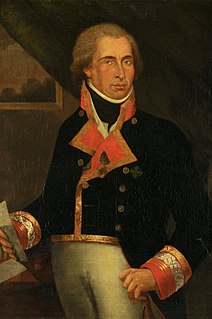 W
WDionisio Alcalá Galiano was a Spanish naval officer, cartographer, and explorer. He mapped various coastlines in Europe and the Americas with unprecedented accuracy using new technology such as chronometers. He commanded an expedition that explored and mapped the Strait of Juan de Fuca and the Strait of Georgia, and made the first European circumnavigation of Vancouver Island. He reached the rank of brigadier and died during the Battle of Trafalgar.
 W
WFrancisco Hermenegildo Tomás Garcés, O.F.M., was a Spanish Franciscan friar who served as a missionary and explorer in the colonial Viceroyalty of New Spain. He explored much of the southwestern region of North America, including present day Sonora and Baja California in Mexico, and the U.S. states of Arizona and California. He was killed along with his companion friars during an uprising by the Native American population, and they have been declared martyrs for the faith by the Catholic Church. The cause for his canonization was opened by the Church.
 W
WJuan de Grijalva was a Spanish conquistador, and a relative of Diego Velázquez. He went to Hispaniola in 1508 and to Cuba in 1511. He was one of the early explorers of the Mexican coastline.
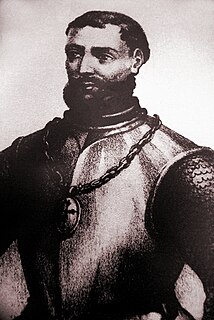 W
WFrancisco Hernández de Córdoba was a Spanish conquistador, known to history mainly for the ill-fated expedition he led in 1517, in the course of which the first European accounts of the Yucatán Peninsula were compiled.
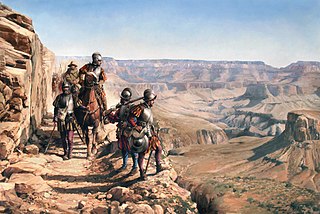 W
WGarcía López de Cárdenas y Figueroa was a Spanish conquistador who was the first European to see the Grand Canyon.
 W
WAntonio Margil was a Spanish (American) Franciscan missionary in North and Central America.
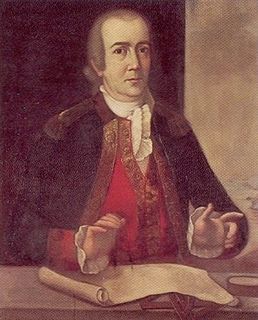 W
WEsteban José Martínez Fernández y Martínez de la Sierra, or simply José Esteban Martínez (1742–1798) was a Spanish navigator and explorer, native of Seville. He was a key figure in the Spanish Exploration of the Pacific Northwest.
 W
WPedro Menéndez de Avilés was a Spanish admiral and explorer from the region of Asturias, Spain, who is remembered for planning the first regular trans-oceanic convoys and for founding St. Augustine, Florida, in 1565. This was the first successful Spanish settlement in La Florida and the most significant city in the region for nearly three centuries. St. Augustine is the oldest continuously-inhabited, European-established settlement in the continental United States. Menéndez de Avilés was also the first governor of Florida (1565–74).
 W
WAlvaro Mexia was a 17th-century Spanish explorer and cartographer of the east coast of Florida. Mexia was stationed in St Augustine and was given a diplomatic mission to the native populations living south of St. Augustine and in the Cape Canaveral area. This mission resulted in a "Period of Friendship" between the Spanish and the Ais native population.
 W
WFrancisco de Montejo y Álvarez was a Spanish conquistador in Mexico and Central America.
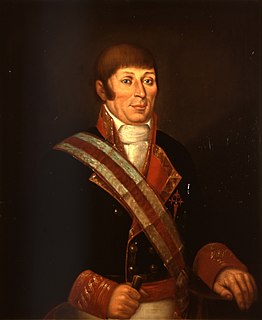 W
WFrancisco Antonio Mourelle de la Rúa was a Spanish naval officer and explorer from Galicia serving the Spanish crown. He was born in 1750 at San Adrián de Corme, near A Coruña, Galicia.
 W
WPánfilo de Narváez was a Spanish conquistador and soldier in the Americas. Born in Spain, he first embarked to Jamaica in 1510 as a soldier. He came to participate in the conquest of Cuba and led an expedition to Camagüey escorting Bartolomé de las Casas.
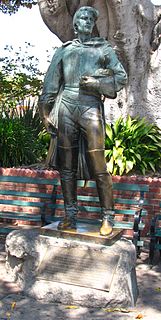 W
WFelipe de Neve y Padilla (1724–1784) was the fourth governor of Las Californias, a province of New Spain, from 1775 to 1782. Felipe de Neve is considered a founder of Los Angeles, California and helped to settle towns of Santa Barbara and San José whose surrounding communities became California cities. In 1781, de Neve issued the first rules regarding governance of secular pueblos like Los Angeles, the "Regulations for the Government of the Province of the Californias"
 W
WÁlvar Núñez Cabeza de Vaca was a Spanish explorer of the New World, and one of four survivors of the 1527 Narváez expedition. During eight years of traveling across what is now the US Southwest, he became a trader and faith healer to various Native American tribes before reconnecting with Spanish civilization in Mexico in 1536. After returning to Spain in 1537, he wrote an account, first published in 1542 as La relación y comentarios, which in later editions was retitled Naufragios y comentarios. Cabeza de Vaca is sometimes considered a proto-anthropologist for his detailed accounts of the many tribes of Native Americans that he encountered.
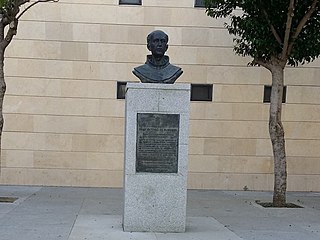 W
WAntonio de San Buenaventura y Olivares or simply Fray Antonio de Olivares was a Spanish Franciscan who officiated at the first Catholic Mass celebrated in Texas, and he was known for contributing to the founding of San Antonio and to the prior exploration of the area.
 W
WJuan de Oñate y Salazar was a Spanish conquistador from New Spain, explorer, and colonial governor of the province of Santa Fe de Nuevo México in the viceroyalty of New Spain. He led early Spanish expeditions to the Great Plains and Lower Colorado River Valley, encountering numerous indigenous tribes in their homelands there. Oñate founded settlements in the province, now in the Southwestern United States. A monument in Alcalde, New Mexico was removed on June 15, 2020.
 W
WFrey Nicolás de Ovando y Cáceres was a Spanish soldier from a noble family and a Knight of the Order of Alcántara, a military order of Spain. He was Governor of the Indies (Hispaniola) from 1502 until 1509, sent by the Spanish crown to investigate the administration of Francisco de Bobadilla and re-establish order. His administration subdued rebellious Spaniards, and completed the brutal "pacification" of the native Taíno population of Hispaniola.
 W
WJuan Pardo was a Spanish explorer who was active in the later half of the sixteenth century. He led a Spanish expedition through what is now North and South Carolina and into eastern Tennessee on the orders of Pedro Menéndez de Avilés, who had built Fort San Felipe (1566), and established Santa Elena, on present-day Parris Island; these were the first Spanish settlements in what is now South Carolina. While leading an expedition deeper in-country, Pardo founded Fort San Juan at Joara, the first European settlement (1567–1568) in the interior of North Carolina.
 W
WAlonso Álvarez de Pineda was a Spanish Conquistador and cartographer who was first in Texas history. In 1519, he led several expeditions to map the westernmost coastlines of the Gulf of Mexico, from the Yucatán Peninsula to the Pánuco River, just mapped parts of Florida, which he believed to be an island. Antón de Alaminos' exploration eliminated the western areas as being the site of the passage, leaving the land between the Pánuco River and Florida to be mapped.
 W
WJuan Ponce de León, commonly known as Ponce de León, was a Spanish explorer and conquistador known for leading the first official European expedition to Florida and serving as the first governor of Puerto Rico. He was born in Santervás de Campos, Valladolid, Spain in 1474. Though little is known about his family, he was of noble birth and served in the Spanish military from a young age. He first came to the Americas as a "gentleman volunteer" with Christopher Columbus's second expedition in 1493.
 W
WGaspar de Portolà i Rovira was a Spanish soldier and administrator in service to the Spanish Empire in the Viceroyalty of New Spain. As commander of the Portolà expedition on land and sea that established San Diego and Monterey, Portolá expanded New Spain's Las Californias province far to the north from its beginnings on the Baja California peninsula. Portolá's expedition also was the first known European to see and record what we now call San Francisco Bay. His expedition gave names to geographic features along the way, many of which are still in use.
 W
WManuel Quimper Benítez del Pino was a Spanish Peruvian explorer, cartographer, naval officer, and colonial official. He participated in charting the Strait of Juan de Fuca and the Sandwich Islands in the late 18th century. He was later appointed a colonial governor in his native Peru at the beginning of the fight for independence there. He retired to Spain, but was able to return to Peru where he served as a naval officer in the new republic and pursued a literary career, publishing over 20 books about his experiences before his death there in Lima.
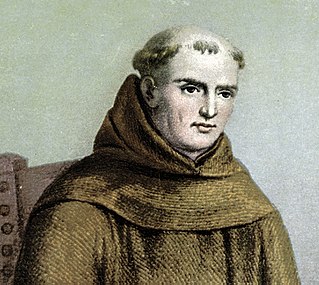 W
WJunípero Serra y Ferrer, O.F.M., was a Roman Catholic Spanish priest and friar of the Franciscan Order. He is credited with establishing the Franciscan Missions in the Sierra Gorda, a UNESCO World Heritage Site. He later founded a mission in Baja California and the first nine of 21 Spanish missions in California from San Diego to San Francisco, in what was then Spanish-occupied Alta California in the Province of Las Californias, New Spain.
 W
WSilvestre Vélez de Escalante was a Franciscan missionary and explorer of the Southwest United States during the late 18th century. He is known for his journal, in which he described the expeditions he went on. These included a failed overland expedition in 1776.
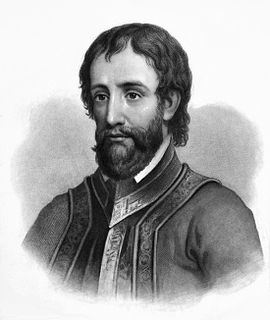 W
WHernando de Soto was a Spanish explorer and conquistador who was involved in expeditions in Nicaragua and the Yucatan Peninsula, and played an important role in Pizarro's conquest of the Inca Empire in Peru, but is best known for leading the first European expedition deep into the territory of the modern-day United States. He is the first European documented as having crossed the Mississippi River.
 W
WVicente Tofiño de San Miguel y Wanderiales was a Spanish navigator and cosmographer.
 W
WRodrigo de Triana was a Spanish sailor, believed to be the first European since Leif Ericson to have seen the Americas. Born as Juan Rodríguez Bermejo, Triana was the son of hidalgo and potter Vicente Bermejo and Sereni Betancour.
 W
WFrancisco de Ulloa was a Spanish explorer who explored the west coast of present-day Mexico under the commission of Hernán Cortés. The reports of his expeditions along the Baja California Peninsula are credited with being influential in the perpetuation of the 17th century cartographic misconception of the existence of the Island of California.
 W
WCayetano Valdés y Flores Bazán (1767–1835) was a commander of the Spanish Navy, explorer, and captain general who served in the French Revolutionary and Napoleonic Wars, fighting for both sides at different times due to the changing fortunes of Spain in the conflict. He took part in a number of naval battles, including the Great Siege of Gibraltar, the Battle of Cape St Vincent, and the Battle of Trafalgar. He was an explorer, most notable in the Pacific Northwest, where he and Dionisio Alcalá Galiano conducted the first circumnavigation of Vancouver Island, in partial cooperation with George Vancouver. Over his long career he achieved the highest ranks in the Spanish Navy, eventually being named Captain General of Cadiz and Captain General of the Spanish Navy.
 W
WLucas Vázquez de Ayllón was a Spanish magistrate and explorer who in 1526 established the short-lived San Miguel de Gualdape colony, one of the first European attempts at a settlement in what is now the United States. Ayllón's account of the region inspired a number of later attempts by the Spanish and French governments to colonize the southeastern United States.
 W
WFrancisco Vázquez de Coronado y Luján was a Spanish conquistador and explorer who led a large expedition from what is now Mexico to present-day Kansas through parts of the southwestern United States between 1540 and 1542. Vázquez de Coronado had hoped to reach the Cities of Cíbola, often referred to now as the mythical Seven Cities of Gold, which is a term not invented until American gold-rush days in the 1800s. His expedition marked the first European sightings of the Grand Canyon and the Colorado River, among other landmarks. His name is often Anglicized as "Vasquez de Coronado" or just "Coronado".
 W
WÁngel de Villafañe was a Spanish conquistador of Florida, Mexico, and Guatemala, and was an explorer, expedition leader, and ship captain, who worked with many 16th-century settlements and shipwrecks along the Gulf of Mexico.
 W
WGaspar Pérez de Villagrá (1555–1620) was a captain and legal officer in the Juan de Oñate expedition that first colonized Santa Fe de Nuevo México in 1598. Between 1601 and 1603, he served as the Alcalde mayor of the Guanacevi mines in what is now the Mexican state of Durango. He is better known for his authorship of Historia de la Nueva México, published in 1610.
 W
WSebastián Vizcaíno (1548–1624) was a Spanish soldier, entrepreneur, explorer, and diplomat whose varied roles took him to New Spain, the Philippines, the Baja California peninsula, the California coast and Japan.